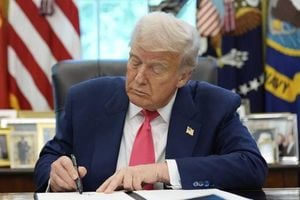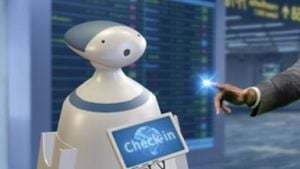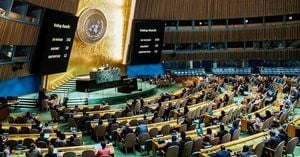Tesla has set its ambitions high with plans to roll out its unsupervised Full Self-Driving (FSD) robotaxi software across multiple global markets this year. This initiative aims to help justify the company’s staggering $1.3 trillion market cap. Elon Musk recently described how Tesla is on the brink of achieving fully autonomous driving, which he predicts will create the largest overnight increase in asset value ever seen.
Yet, challenges persist. During Tesla’s recent fourth-quarter investor call, Musk candidly addressed one major obstacle—bus lanes in China. "There’s literally hours of the day you’re allowed to be there or not be there, and if you accidentally go onto the bus lane at the wrong time, you get an automatic ticket instantly," he explained. Such mundane challenges complicate the goal of getting FSD operational efficiently.
Looking forward, Tesla aims to be the first company to launch robotaxi technology adaptable to any urban environment, whether it’s the streets of the U.S., Europe, or China. This system could turn private Tesla vehicles—a kind of AirBnB for cars—into money-making robotaxis, potentially generating tens of thousands of dollars for their owners annually. Currently, competitors like Waymo rely on detailed three-dimensional maps and expensive LiDAR systems, limiting their scalability.
By relying on their own vehicles' cameras, Tesla hopes to avoid these pitfalls. Once equipped with reliable visibility, cars would utilize driving commands from their onboard AI computer, which has been trained through footage from other Tesla vehicles, creating the potential for what Musk describes as a winner-takes-all scenario.
Yet, achieving this goal has not been easy. Back in 2016, Tesla published a blog post claiming all electric vehicles produced would possess the hardware necessary for FSD, sparking excitement among potential customers. That initial enthusiasm proved premature, leading the company to later delete the post as they shipped millions of updated Hardware 3 (HW3) computers to replace older HW2.5 devices, which were unable to support full autonomy. More recently, Musk admitted these new chips would also need replacing, saying during the earnings call, "the truth is we’re gonna have to upgrade people’s Hardware 3 computer for those who have bought Full Self Driving, and it is going to be absolutely painful and difficult."
The hardware upgrades come at a time when the FSD package’s price has surged from $2,000 to $15,000, reflecting changing consumer expectations and commitments. Following previous promises allowing customers free HW3 upgrades if they purchased FSD, this new information might raise legal questions. While many Tesla vehicles are already fitted with HW3, those who haven't paid for FSD will not be part of the upgrade. The controversy surrounding free upgrades reached new heights when the company faced legal repercussions from owners not receiving obstacles they believed were promised.
Tesla has made significant strides with its FSD program, launching version 13 amid positive user feedback. During the latest quarterly update, it was revealed FSD users likely surpassed 3 billion cumulative miles since the program began. Significant mileage milestones showcase the groundwork being laid for future expansion, yet actual rollout remains stymied by geographic and regulatory issues.
Musk highlighted the European market as particularly challenging, noting the cumbersome layers of regulations. "Europe is like America when it innovates, but with layers of bureaucracy." He added, "just to release supervised full self-driving there, we have to pass through mountains of paperwork with the Netherlands, our primary regulatory authority." Enduring this regulatory complexity delays projected timelines for European customers eagerly awaiting the technology.
Transitioning to China presents its own barriers; current regulations prevent Tesla from transferring training video data outside its borders, coupled with constraints imposed by the U.S. government. Musk said, "...we’re resolving this by using publicly available street videos to train our models and put it through enhanced simulation testing, particularly for tricky elements like bus lanes."
Musk’s concerns reflect the reality of introducing autonomous vehicles within complex urban infrastructures. Bus lanes, for example, impose nuanced timing restrictions, complicate operations, and necessitate real-time awareness of local laws to avoid penalization—a difference from simpler street rules.
Despite these hurdles, Tesla remains dedicated to refining its systems and working through regulatory obstacles. Continual advances with the FSD technology, particularly with supportive hardware, pave the way for updates targeting vehicles with HW4, which are expected to ship with the upcoming Model 3 and redesigned Model Y.
While the company is optimistic about the future, the path to achieving full autonomy faces significant impediments. For Tesla to solidify its stance as the leading force in autonomous vehicle technology, the successful navigation of both technological pitfalls and regulatory landscapes will prove pivotal.
We are witnessing the cutting edge of technology as Tesla continues to innovate, but the expectations of arriving at fully autonomous vehicles must be balanced with realistic timelines and challenges. If Tesla can overcome these hurdles, it could potentially reshape the way transportation operates globally.



